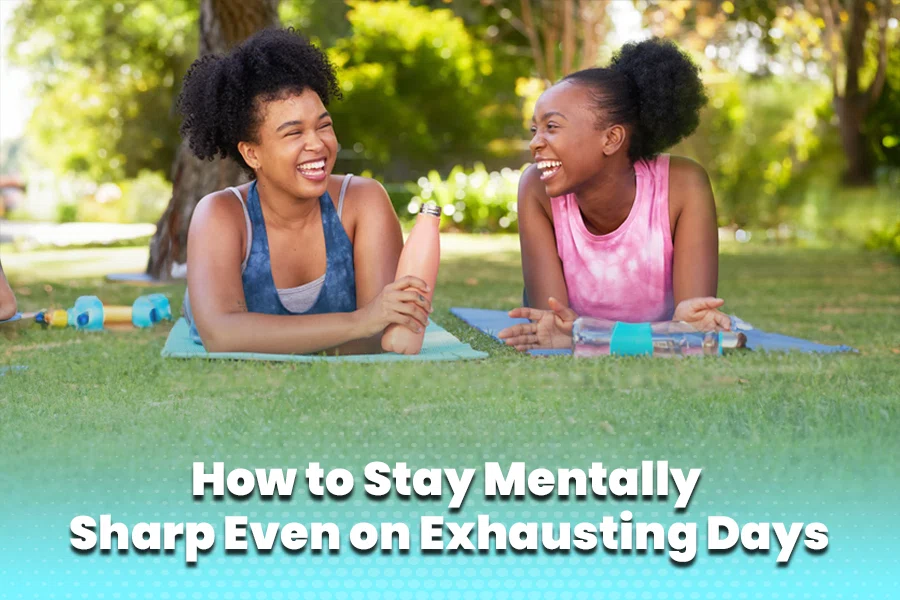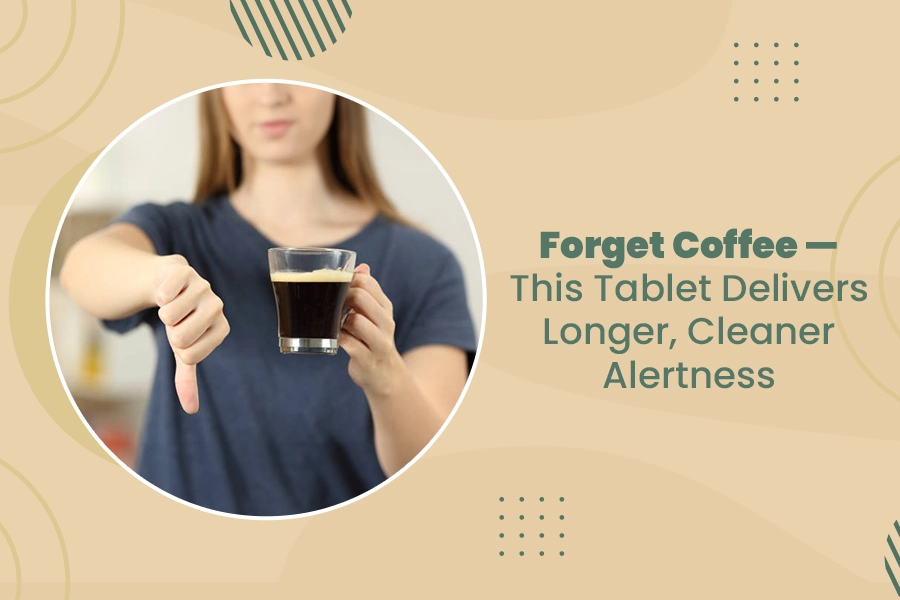The modern world often feels like a non-stop, high-stakes game. Seriously, does anyone remember downtime? Your inbox? Permanently overstuffed. It stretches into next week, probably into next year. And that relentless digital hub, well, it leaves you feeling wired, sure, but also utterly, hopelessly drained. This kind of ceaseless pace isn’t just a tough grind; it’s a perfect incubator for chronic stress. And here’s the kicker: this stress doesn’t just make you feel lousy—it actively muddies the waters of your thinking, compromises your memory, and fundamentally sabotages your mental clarity.
This isn’t merely about feeling less tense. Oh no. This is a strategic, almost subversive, approach to genuine cognitive enhancement. By employing practical, almost stealthy, focus techniques and truly embracing foundational habits of well-being, we can utterly transform our relationship with pressure. We can actually allow our minds to operate with the clean, precise efficiency of, well, a finely-tuned machine. Think less sputtering engine, more purring supercar. Let’s dive into the core techniques that genuinely work to unburden your brain and restore your intellectual edge. Get ready to think better, feel better, and just be better.
The Enemy Within: How Stress Hijacks Your Head (and Steals Your Focus)
Before we even begin to talk about managing stress, we have to grasp its true cognitive cost. It’s a thief, plain and simple. When you’re stressed—and let’s be honest, who isn’t?—your body hits the panic button. It floods your system with cortisol, the primary stress hormone. Now, cortisol is a marvel, really. It’s brilliant for a split-second “fight or flight” scenario; it literally keeps you alive if a saber-toothed tiger jumps out. But its prolonged, chronic presence? That’s corrosive. It eats away at the parts of your brain responsible for all that higher-order thinking: the prefrontal cortex. The bit that makes you you.
This is exactly why, when you’re overwhelmed, you experience that soul-crushing mental fog. Your working memory—that temporary mental notepad you use for complex calculations and juggling multiple ideas simultaneously—it just gets jammed. Your attention? It fragments into a thousand tiny, useless pieces. You become reactive, almost primitively so, instead of thoughtful. Essentially, chronic stress forces your brilliant, complex brain to revert to its most basic, most desperate, reactive state. And who wants that? The entire, overarching goal of genuinely effective stress management is to quiet that incessant, primitive alarm system and, crucially, restore your executive function. Let’s get your brain back to being a brain, not just an alarm bell.
Phase 1: Foundational Techniques to Reduce Stress
True stress management doesn’t start with some complicated, esoteric rituals. Forget the crystals and the expensive retreats for a moment. It begins, rather, with the steady, almost stubborn, cultivation of daily, non-negotiable habits. These aren’t optional extras. These are the practices that literally regulate your nervous system.
- The Power of Movement: Exercise as Actual Medication
It’s an undeniable truth, one we often ignore despite hearing it constantly: the body and mind are a single, beautiful, interconnected system. Physical activity is, arguably, the most potent, most natural anti-anxiety and antidepressant you have available. When you exercise, you’re not just, you know, “burning calories.” You are quite literally burning off excess cortisol and adrenaline. Think of it as hitting the reset button on your internal stress factory.
- Aerobic Release: A brisk walk, a good jog, or even just a wild dance session in your living room acts as a physical pressure-release valve. It helps your body metabolize the messy physical byproducts of stress, instantly clearing some of that mental static. The simple, rhythmic action of running or walking? It can be a deeply meditative and stress-reducing act all by itself.
- Strength and Grounding: Lifting weights, or even just doing some solid bodyweight exercises (planks, push-ups, squats—you know the drill), gives you this incredibly tangible sense of control and competence. The physical exertion forces you to focus on the immediate present—the weight, your form, the effort. This is a powerful, much-needed break from spiraling on future anxieties.
Our advice? Commit to at least 30 minutes of moderate activity most days. Non-negotiable. The very moment you feel that pressure building, a simple 10-minute walk outside can often be a far, far more productive break than, say, endlessly scrolling through your phone, which just adds more input. Try it.
2. Sleep: The Absolute Non-Negotiable Cognitive Reset
Sleep is not a luxury. It’s not some indulgence for when you have “extra time.” It is a profound, biological maintenance process. It’s when your brain literally cleanses itself of metabolic waste products (the gunk that builds up all day) and consolidates memory. Seriously! When you skimp on sleep, you are, I promise you, guaranteeing a higher baseline of stress and a significantly lower capacity for genuine mental clarity.
- Establish a Sanctuary: Make your bedroom a true haven. We’re talking dark, cool, and quiet. Pitch black, if you can manage it. Think cave.
- The Digital Sunset: This one’s tough for many, but crucial. Stop using all electronic screens—and I mean ALL of them—at least 60 minutes before bedtime. The blue light actively suppresses melatonin, your body’s sleep hormone. Plus, the content itself just stimulates your mind when it should be winding down.
- Consistent Timing: Go to bed and wake up at roughly the same time every single day, yes, even on weekends. This consistent rhythm profoundly stabilizes your body’s circadian clock, which, in turn, directly regulates your mood and stress response. It’s like resetting your internal clock.
3. Nutrition: Fueling the Fray (Because Your Brain Eats Too)
What you actually put into your body directly impacts the stability of your mood and your energy levels. Think about it: those sharp spikes and crushing crashes in blood sugar—often caused by refined sugars and heavily processed foods—they literally mimic the physiological symptoms of anxiety. You end up jittery, unfocused, and well, just not yourself.
- The Stabilizers: Prioritize whole, unprocessed foods. We’re talking slow-release stuff. Omega-3 fatty acids (from fatty fish like salmon, walnuts, and chia seeds) are absolutely crucial for brain health and have proven mood-stabilizing effects. Load up on B Vitamins and Magnesium; they’re superstars for supporting your nervous system, helping you cope better with stress.
- Avoid the Quick Fix: Limit caffeine. Seriously, especially in the afternoon. And please, please, avoid using alcohol as a coping mechanism for stress. Both offer a temporary, fleeting sense of relief, but they fundamentally disrupt your sleep and, over time, actually worsen anxiety. It’s a vicious cycle.
Phase 2: Actionable Focus Techniques for a Clearer Mind (Your Daily Arsenal)
Alright, so the foundations are in place. This second phase, it’s about direct, in-the-moment practices. These are the things that help you anchor your attention and transition from a state of scattered panic to one of intentional, clear-headed action. Think of these as your personal tools for immediate de-escalation and dramatically enhanced mental clarity.
1. Mindfulness and the Breath Anchor (Your Instant Calm Button)
Mindfulness? It’s just the practice of paying attention to the present moment without judgment. Sounds simple, right? It is. And your breath? It’s the fastest, most ridiculously effective way to enter this state. Deep, slow, diaphragmatic breathing instantly signals to your vagus nerve—which is basically the main highway of your parasympathetic (rest and digest) nervous system—that you are, in fact, safe. It’s a profound biological hack.
- The 4-7-8 Technique: This classic technique is profoundly, deeply calming. Here’s how: Inhale quietly through your nose for a slow count of four. Hold that breath for a count of seven. Then, exhale completely through your mouth, making a gentle whoosh sound, for a count of eight. Repeat this cycle three or four times. That extended exhale is your secret weapon; it’s absolutely key to reducing your heart rate and calming the racing mind.
- Body Scan: Take just a few minutes. Sequentially focus your attention on different parts of your body, starting from your toes and slowly moving up to the crown of your head. Notice any tension there. Acknowledge it, and then consciously invite those muscles to relax. This incredibly simple mental exercise grounds you firmly in your physical self, beautifully breaking the stress-induced cycle of abstract worry.
2. The Single-Task Focus (Or, Why Multitasking is a Liar)
One of the absolute biggest thieves of mental clarity is that grand old myth: multitasking. We’ve all been sold on it, haven’t we? But here’s the truth: when you try to do two things at once, your brain isn’t actually doing two things. It’s just switching rapidly back and forth between them. And that, my friend, incurs a massive cognitive cost known as the “switching penalty.” This rapid-fire switching is highly stressful, deeply inefficient, and will leave you feeling frazzled.
- Time Boxing: This is genius. Allocate a specific, uninterrupted block of time—say, 45 minutes—to a single, high-priority task. During this time, remove all distractions. Phone on silent. All irrelevant browser tabs closed. The commitment to a single focus significantly reduces the background anxiety of constantly juggling. It’s liberating.
- The Two-Minute Rule: If a task will take less than two minutes, do it immediately. Seriously. Answering that quick email, putting away those dishes, adding that appointment to your calendar. This prevents a multitude of small, nagging tasks from accumulating in your mental queue, which, believe me, is a major source of low-grade, persistent stress. Clear the small stuff out.
3. Structured Breaks: The Secret Sauce for Sustained Performance
Your brain, amazing as it is, cannot maintain high-intensity focus indefinitely. It just can’t. Trying to push through mental fatigue is a classic stressor that always, always leads to diminishing returns. You’re just spinning your wheels. Strategic, structured breaks are not procrastination. No. They are a necessary, vital part of the cycle of high performance.
- The Pomodoro Principle: Work with intense, laser-like focus for 25 minutes. Then, take a full 5-minute break. Every four of these cycles, take a longer, 20-30 minute break. And here’s the absolutely crucial bit: during the break, do not engage in stimulating mental activity. Don’t scroll your phone. Don’t check email. Stand up, stretch, look out the window, or just drink some water. This allows your prefrontal cortex to literally rest, recharging its capacity for the next focused interval.
- Journaling as a “Brain Dump”: When thoughts are swirling, making you anxious, get them out of your head. Spend 5-10 minutes just writing down absolutely everything that is bothering you—the to-do list, the worries, the fragmented ideas. This simple act of transcribing a chaotic internal monologue onto paper gives you an incredible sense of distance and control. It frees up your working memory for the important work ahead.
Stress Management, Cognitive Enhancement, and the Nootropic Question: A Realistic Look
Okay, let’s talk about the elephant in the room. The desperate desire for a clearer, more focused mind has fueled an absolute boom in the popularity of “smart drugs,” or nootropics. These substances—ranging from tightly controlled prescription medications like Modafinil and Ritalin (often used off-label, unadvisedly) to perfectly legal, over-the-counter supplements like L-Theanine, Caffeine, and various proprietary blends—are marketed with a powerful promise: enhanced cognition, better memory, and laser-like focus techniques, all without the traditional, grueling effort of discipline.
The core idea, the fundamental premise driving their non-prescribed use, is almost always this: a failure to manage stress through natural means. Think about it. Faced with relentless, unforgiving pressure from work or academic demands, many individuals look for a pharmacological shortcut. They hope a pill will bypass the exhaustion and mental fog created by chronic stress, believing these compounds will just ‘force’ their brain to perform.
Now, while some well-researched, non-prescription nootropics—like the tried-and-true combination of L-Theanine and Caffeine (hello, green tea!)—can indeed offer a smoother, more focused energy boost by actively mitigating the jitters that caffeine often brings, the use of stronger, prescription-level smart drugs carries significant, often underestimated, risks. We’re talking potential dependence, cardiovascular side effects, and a huge, unknown long-term impact on a healthy, developing brain.
But here’s the kicker, the important part is: using a smart drug to power through the symptoms of chronic stress completely, utterly ignores the root cause. A pill cannot fix a broken work-life balance. It won’t magically mend poor sleep habits or magically give you fundamental stress management skills. It simply can’t. True, sustainable mental clarity isn’t conjured from a bottle. It is painstakingly, resiliently built on the robust foundation of disciplined wellness—that means sleep, that means exercise, and that means mindfulness. It’s not on chemical attempts to temporarily override your body’s profound, legitimate biological exhaustion. Never forget that.
Conclusion: The Journey to Absolute Clarity
Listen, achieving profound mental clarity isn’t about eliminating stress entirely. Let’s be real; that’s an impossible, naive goal in human life. Stress exists. What it is about, however, is building a robust, incredibly adaptable system for stress management so that pressure becomes a manageable challenge, not some debilitating, soul-crushing force. The techniques we’ve discussed here? They’re not just momentary fixes. They are genuine, honest-to-goodness skills to be practiced, honed, and then seamlessly integrated into the very fabric of your day. Every single day.
By committing to foundational self-care (you know: sleep, movement, solid nutrition) and then diligently employing those practical focus techniques (mindfulness, that powerful mono-tasking, those indispensable structured breaks), you are doing more than just “feeling a bit better.” You are fundamentally rewiring your brain. You’re strengthening its ability to concentrate, to make sound decisions even under pressure, and to access your deepest creative and intellectual resources. This path, I won’t lie, requires consistency. It takes patience. And yes, it demands a real, unwavering commitment to yourself. But the reward—an unburdened mind, operating at its peak, with sparkling clarity—is, without a doubt, the most valuable form of competitive advantage you could possibly achieve. Start small. Be consistent. And just watch as the fog lifts, revealing the clear, sharp, incredible mind that has been waiting patiently underneath all that pressure.
Frequently Asked Questions (FAQs)
Q1: How quickly can I expect to actually see results from these stress management techniques?
A: You’ll probably feel an immediate, though temporary, shift towards calm from something simple like deep breathing or a brisk walk. That’s your nervous system responding. However, for sustained mental clarity and a noticeable reduction in chronic stress? That factually requires consistency. You should likely feel a significant improvement in your sleep quality and overall mood within, say, 2-4 weeks of consistently implementing the foundational habits—think stable sleep schedule, regular exercise, and solid nutrition. As for focus techniques like mono-tasking and the Pomodoro method? They often show cognitive benefits almost immediately, just by cutting down on that energy-draining task-switching. So, quick wins, but lasting change takes a bit more.
Q2: I’m genuinely too stressed to even think about meditating. What’s the absolute simplest focus technique I can start with?
A: I get it. “Just meditate” sounds impossible when your brain’s on fire. So, let’s try something ridiculously simple: the “Three Conscious Breaths.” It literally requires zero setup and only about 15 seconds. Here’s how: Stop whatever you are doing. Seriously, just pause. Inhale deeply, filling your belly first, then your chest. Exhale fully. That’s one. Now, do two more exactly like it. The moment you’re done, just return to your task. This isn’t fancy, but this tiny micro-break actually resets your nervous system just enough to interrupt that stress spiral and bring back a little bit of mental clarity. It works.
Q3: Is it better to exercise in the morning or the evening to truly reduce stress?
A: The best time, honestly, is the time you will actually do it consistently. That’s the real secret. However, if you’re looking for optimal impact:
- Morning Exercise can give you a fantastic boost of energy, focus, and improved mood for the entire day. It acts like a shield, making you much more resilient to whatever stressors pop up later.
- Late Afternoon/Early Evening Exercise is absolutely excellent for effectively burning off the stress that’s accumulated during your workday. Just be mindful: avoid intense cardio too close to bedtime (within, say, 2 hours) because that can interfere with your sleep.
Q4: My to-do list is crushing me with anxiety. How do I even begin to manage it?
A: Ah, the dreaded overwhelming list. Let’s tackle that with the “Brain Dump and Prioritize” method. It’s a lifesaver.
- Dump: Grab a pen and paper (or a digital doc). Write down absolutely everything that is stressing you out. Every single task, every worry, no filtering. Get it out of your head.
- Triage: Look at that overwhelming list. Now, circle the three (and only three!) most important items. Which ones, if completed, would make the rest of the list feel significantly easier or less urgent?
- Action: Now, schedule a dedicated “time-box” for only that #1 item. You ignore the rest of the list for now. This powerful act of choosing just one single focus restores an immediate sense of control and drastically reduces all that psychological noise. You’ve got this.
References
- National Institute of Mental Health — Caring for Your Mental Health. National Institute of Mental Health
- American Psychological Association — Stress management tools. American Psychological Association
- World Health Organization — Doing What Matters in Times of Stress (stress-management guide). World Health Organization
- Erickson KI et al. — Physical Activity, Cognition, and Brain Outcomes (review on exercise and cognition). PubMed Central
- Hofmann et al. (2017) — Mindfulness-based interventions for anxiety and depression (review). PubMed Central
- Bentley TGK et al. (2023) — Breathing practices for stress and anxiety reduction (meta-analysis). PubMed Central
- StatPearls — Stress Management (overview of techniques & evidence). NCBI










Leave a Reply